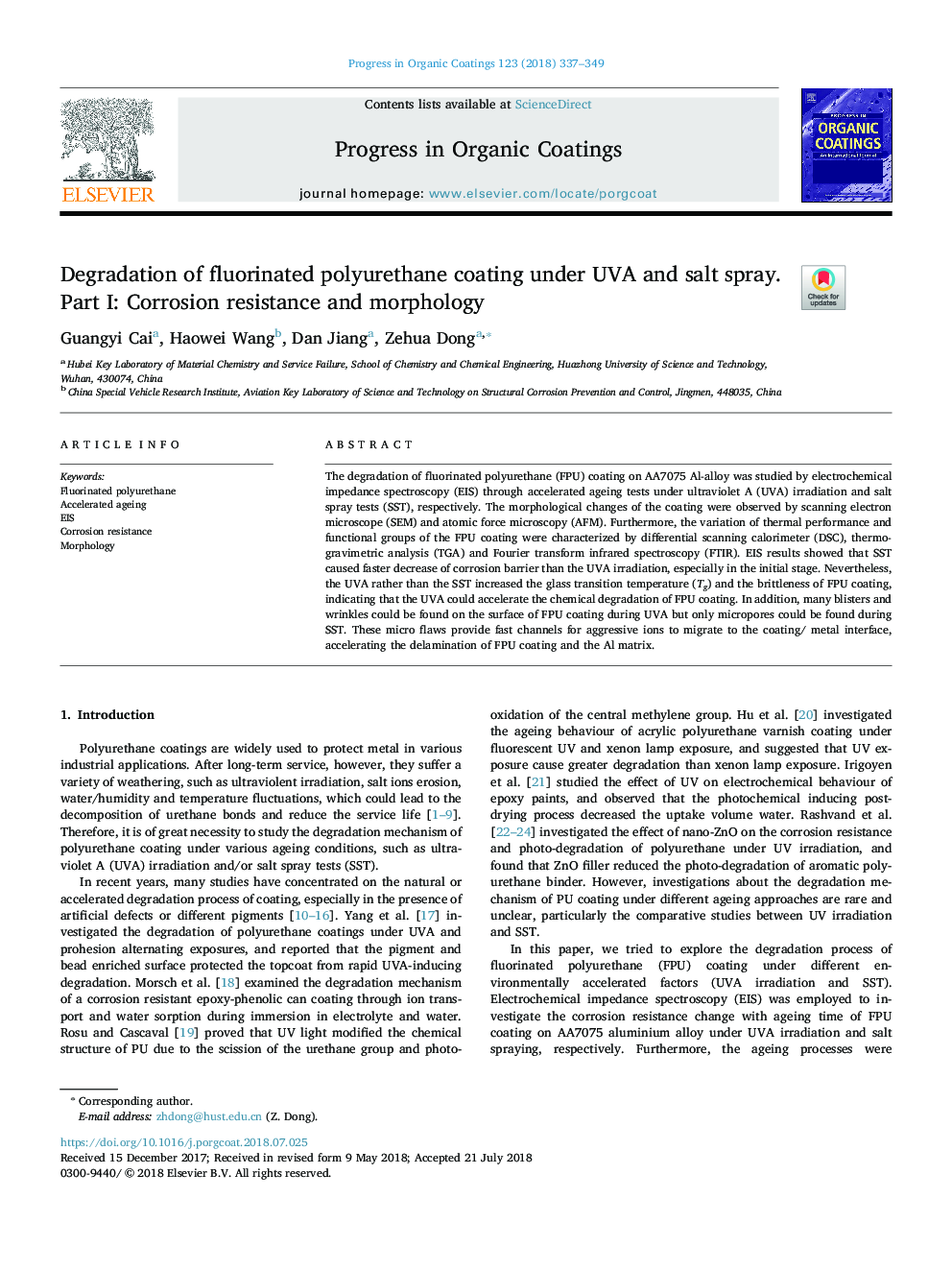| Article ID | Journal | Published Year | Pages | File Type |
|---|---|---|---|---|
| 7105437 | Progress in Organic Coatings | 2018 | 13 Pages |
Abstract
The degradation of fluorinated polyurethane (FPU) coating on AA7075 Al-alloy was studied by electrochemical impedance spectroscopy (EIS) through accelerated ageing tests under ultraviolet A (UVA) irradiation and salt spray tests (SST), respectively. The morphological changes of the coating were observed by scanning electron microscope (SEM) and atomic force microscopy (AFM). Furthermore, the variation of thermal performance and functional groups of the FPU coating were characterized by differential scanning calorimeter (DSC), thermogravimetric analysis (TGA) and Fourier transform infrared spectroscopy (FTIR). EIS results showed that SST caused faster decrease of corrosion barrier than the UVA irradiation, especially in the initial stage. Nevertheless, the UVA rather than the SST increased the glass transition temperature (Tg) and the brittleness of FPU coating, indicating that the UVA could accelerate the chemical degradation of FPU coating. In addition, many blisters and wrinkles could be found on the surface of FPU coating during UVA but only micropores could be found during SST. These micro flaws provide fast channels for aggressive ions to migrate to the coating/ metal interface, accelerating the delamination of FPU coating and the Al matrix.
Related Topics
Physical Sciences and Engineering
Chemical Engineering
Process Chemistry and Technology
Authors
Guangyi Cai, Haowei Wang, Dan Jiang, Zehua Dong,
